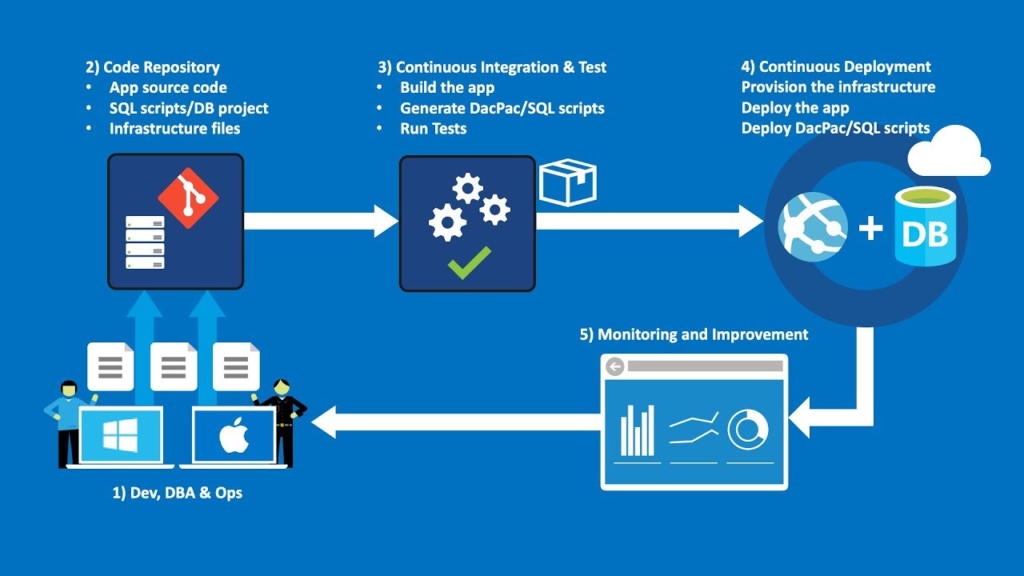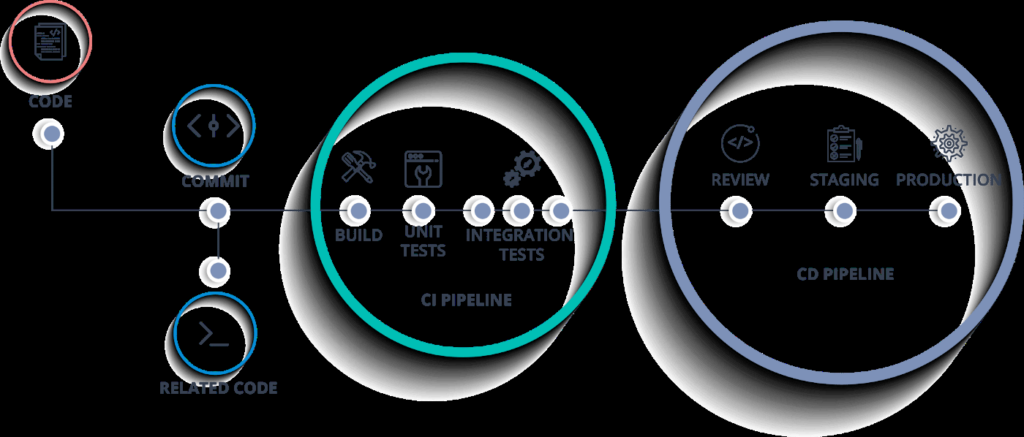The rapid evolution in development from rigidly structured data to responsive, flexible databases allows database administrators (DBAs) to work closely with developers.
DBAs are often tasked with finding ways to make applications run faster and more efficiently.
Utilizing artificial intelligence (AI) for SQL tuning helps DBAs create a truly automated process that significantly streamlines their daily and long-term tasks. Testing and eliminating bugs can happen automatically so database administrators have time to focus on meeting the needs of clients. Automation also makes releasing and delivering updates much less risky.
Automation in SQL Tuning
The objective is to deliver quality code and applications to users. A mature DevOps practice of CI/CD creates an environment where automation is at the core of development and deployment. Many productivity tools are designed to allow DBAs and developers to work at full capacity by accelerating the testing, debugging, and deployment process.

There are several places during the development process where automation is now essential.
Continuous Integration
A framework that supports automated testing helps assure that quality products are consistently delivered. Engineers can use automated software to define and execute several types of tests so that DevOps teams can identify whether or not a certain software build achieves a standard.
Virtually any testing that must occur at this stage can be sent into an automated process. This includes functionality tests and regression tests but extends to other tests as well. Security testing, performance testing, static code analysis, API testing, and other forms of testing can also be automated.
The goal is to truly automate these processes instead of partially automating by requiring a manual initiation sequence. The key is to use automated software that can trigger testing protocols through webhook, command line, or web service and can produce status codes to present a pass or fail. Additionally, a great automated CI process is always coupled with an integrated CD automated pipeline.
Continuous Delivery
An automated CD pipeline can make changes to multiple environments in real-time. Its main job is to push applications into delivery environments and provide status reporting. A basic CD pipeline is made up of three stages: building, testing, and deployment. A more comprehensive CD pipeline will include additional steps:
- Executing and automating code to build or tear down cloud infrastructure
- Taking code from version control and automatically executing a build
- Managing and configuring environment variables for the target environment
- Moving code into the target environment
- Executing continuous testing and reporting
- Rolling back environments if tests fail
- Providing alerts and log data regarding the status of delivery
- Archiving resources
- Performing synchronizations
- Patching applications
Containerization
Using containers to run critical data is crucial for businesses. When team members log into virtual machines to patch or debug applications, there is the possibility that the database could become vulnerable to attacks.
Containers allow efficiency to remain paramount while also improving security through segregating applications from their host environments. Other benefits include portability from clouds and platforms, agility, speed, easier scaling, quick application startup, and streamlined data management.
Another huge aspect of the security of containerization is automation. Automation is critical to running data through a container to maintain safety. Manually running a container would defeat the purpose of using a container in the first place. There are many tools available to effectively manage container deployment tasks and make it very easy to automate tasks.
Database Migration
Another way that automation can positively impact DevOps teams is through automated database migration. There are many reasons to integrate changes to databases through DevOps, but it can be time-consuming to synchronize database adjustments and apply development techniques simultaneously. Automating the migration of SQL databases also improves integration with additional software tools as well.

This means that end-to-end automation can be established for DevOps. Teams can build servers, track software issues, change management, and deliver releases by incorporating all of these processes when automatically migrating databases. Other advantages include the ability to deploy databases automatically, identify and eliminate errors within the early stages of development, make it easier to provide error-free code and respond quickly to client demands.
What Does the Future Hold for DBAs and SQL Automation?
Now that there is a strong community of developers that supports the growth of NoSQL servers, automated practices will streamline horizontal scaling to the benefit of DBAs.
This is especially important as trends continue to shift towards cloud data storage. As networks expand to multi-cloud environments, the issues for all teams become more complex. There is a need to produce AI that can seamlessly integrate the goals of all teams while also providing real-time testing and therefore, a faster delivery cycle.
In the future, DBAs will be challenged by the explosion of streamed data to the Internet of Things (IoT) devices. Managing the processing and storage of massive amounts of data while also protecting user privacy and data sovereignty will open up new capabilities for autonomous DBMSes that can streamline CI/CD pipelines.

DBAs should feel empowered by these developments, as it will pave the way for them to become strategic contributors to their organizations.
Conclusion
Modern software development requires constant innovation and improvement, with many changes and adjustments implemented and tested before deploying an application. Database automation is now one of DevOps’ greatest assets when it comes to the speed and agility of releasing new products and updates. By using automation for SQL tuning, developers and DBAs can save time since they no longer have to create and deploy scripts manually, bugs are easier to detect and fix, and the risk of application errors is removed. Without all this weighing them down, DBAs can focus on helping their organization innovate and expand.
Tags: artificial intelligence, automation, sql tuning Last modified: October 27, 2022






